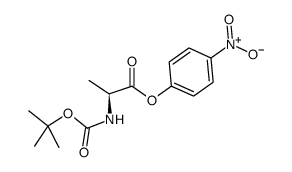| 结构式 | 名称/CAS号 | 全部文献 |
|---|---|---|
 |
N-叔丁氧羰基-L-丙氨酸 4-硝基苯酯
CAS:2483-49-0 |
| 结构式 | 名称/CAS号 | 全部文献 |
|---|---|---|
 |
N-叔丁氧羰基-L-丙氨酸 4-硝基苯酯
CAS:2483-49-0 |